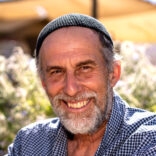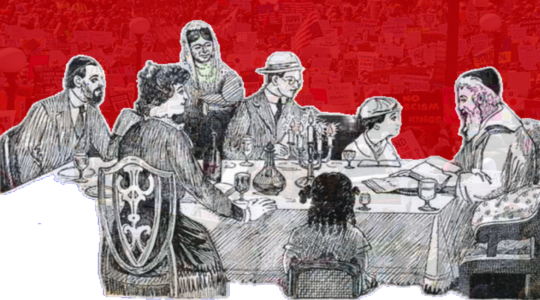Water is the common denominator of the human experience. Our home is called the Blue Planet because of the spacious amounts of water covering the earth. Adding to our shared experience, water makes up about 60 percent of our body mass, and water plays a significant role in the world’s religions. The three Abrahamic religions, born out of the waterless deserts of the Middle East, all use water in significant ways. Yet, freshwater, literally our source of life, makes up only 2.5 percent of all of the earth’s water, and so we are not surprised when we look at the Arab-Israeli conflict, and discover that water factors as a source of confrontation.
Water, particularly the headwaters of the Jordan River, has led to tensions in the region for the past six decades. Water was one of the major causes of the 1967 Six Day War, and has been an ongoing unresolved issue between the Palestinian and Israeli authorities. At the same time Israel and Jordan created water sharing modalities in their peace treaty of 1994 and there are models of water cooperation between various NGOs in the region. Secretary of State John Kerry has found the question of the Jordan River Valley a core issue in the talks between the Israelis and Palestinians.
Dr. Clive Lipchin is director of Center for Transboundary Water Management at the Arava Institute for Environmental Studies. In an address at Bennington College’s Center for the Advancement of Public Action Water Dialogues, he shared a plan to use desalinization as a game-changer for regional water management and cooperation in the Middle East, particularly the Jordan River. As he stated, the growing populations of Israel, the Palestinian Authority, and Jordan outpacing, in Malthusian dimensions, the availability of fresh water adds yearly to the regional stresses. A country is considered water poor if it has an annual capacity of less than 1000 cubic meters and in state of chronic water shortage with an annual capacity of less than 500 cubic meters of water a year. To put the challenges of the region in perspective Israel has an annual capacity of only 300 cubic meters a year, Jordan 230 cubic meters a year, and the Palestinian Authority 95 cubic meters a year.
In 2010 the water demand for the Palestinian Authority, Jordan, and Israel was just under 4000 cubic meters a year with a supply of just over 3000 cubic meters a year. By 2040 the demand will increase to just over 7,000 cubic meters a year with the supply lagging even further behind at 5,000 cubic meters a year.
The Sea of Galilee and the Dead Sea both provide stark visual images of state of water in the region. Since 2004 the level of the Sea of Galilee has dropped from -208.80 meters below sea levels to -213.60 meters below sea level, while the Dead Sea is now disappearing at the rate of 1.3 meters a year. In 1960 the level of the Dead Sea was at – 390 meters below sea level with a surface area of 1020 square kilometers, in 2005 the level was – 420 meters below sea level and has a surface capacity of only 635 square kilometers.
The shrinking amount of fresh water available as needs for fresh water continue to grow combined with the political tensions in the Jordan River watershed only make a bad situation worse. When it comes to our encounter and use of the earth’s environmental resources limiting choices to political borders can stifle the imagination of what is possible. Nature simply does not know borders. The Canadian organization Program on Water Governance advocates a regional approach to water issues that takes into account watersheds. They say that water security may be defined as, “sustainable access, on a watershed basis, to adequate quantities of water, of acceptable quality, to ensure human and ecosystem health.”
Echoing this approach Dr. Lipchin says that national capacities and need should be identified within a regional context and when this is done with the countries of the Jordan River watershed possibilities reveal themselves. (With present political realities Syria and Lebanon are not included for the time being.) Israel has some of the world’s largest desalinization plants on her Mediterranean shoreline that can provide the growing freshwater needs of Israel and her neighbors. Jordan has large amounts of land where the vast amounts of electricity needed to power the desalination plants could be generated. And the Palestinian territories contain very important groundwater aquifers essential to the health of the Jordan River watershed.
We are in the home stretch of the nine-month peace talks between the Israelis and Palestinians sponsored by the Obama Administration. Borders, security, refugees, and Jerusalem are being addressed. While all are important and essential for an agreement, they lack modalities for cooperation. An agreement that only focuses on separating the parties without also bringing them together is bound to fail. The Jordan River watershed that transcends whatever borders may be agreed to provide a shared link from which the peoples of the region can build new relationships and work together on common interests.
Rabbi Michel M. Cohen is the rabbi emeritus of the Israel Congregation in Manchester Center, Vermont and teaches about conflict resolution at Bennington College. He is director of community relations for Friends of the Arava Institute for Environmental Studies.
The New York Jewish Week brings you the stories behind the headlines, keeping you connected to Jewish life in New York. Help sustain the reporting you trust by donating today.





